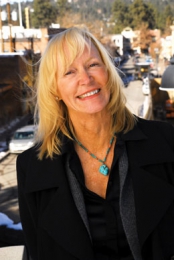Why would anyone dance around the issue of equal rights and find a way to oppose women being explicitly equal in Oregon’s constitution? The matter is so significant that four former Oregon Supreme Court Justices wrote an open letter to the public stating we need to pass Measure 89.
As the founder/publisher of the only women-owned newspaper in Oregon, I am proud to support an opportunity to vote for an Oregon Equal Rights for Women initiative on the November 4, 2014 ballot as an initiated constitutional amendment.
Measure 89 made it to the ballot via the signature gathering method as attempts to pass the amendment or refer it to voters during the 2013 legislative session went nowhere even with 51 bi-partisan sponsors.
The same Constitution that once prohibited women from voting or owning property still does not provide enough protection against sex discrimination. Women’s right to vote also failed in the Oregon Legislature and they used Oregon’s new initiative system to finally put the measure on the ballot and after six tries passed it in 1912.
Measure 89 will guarantee that “equality of rights under the law shall not be denied or abridged by the State of Oregon or by any political subdivision in this state on account of sex.”
How can you possibly argue with that unless you have clear discriminatory biases on your mind? Opponents, for instance, suggest that regardless of what type of discrimination, this might somehow change the current interpretation that has been applied by Oregon courts. They are suggesting we should just keep it the way it is so that we can, if we so choose, discriminate against women based on their sex. It’s a ridiculously absurd and unsubstantiated argument.
The Oregon initiative is also known as the Equal Rights Amendment (ERA). The campaign to pass a state amendment coincides with a revived national campaign to pass a federal Equal Rights Amendment. That amendment, approved by Congress in 1972, never went into effect because it fell three states short of the minimum 38 states that needed to ratify it. Oregonians approved the federal ERA in 1973.It is offensive to women everywhere that it has taken forty years to bring this issue to the table again.
The federal ERA, affirming the equal application of the Constitution to all persons regardless of their sex, was written in 1923 by Alice Paul, suffragist leader and founder of the National Woman’s Party. After women’s right to vote was guaranteed by the 19th Amendment in 1920, she proposed the ERA as the next step in confirming “equal justice under law” for all citizens.
Since then the ERA was introduced into every Congress between 1923 and 1972, when it was passed and sent to the states for ratification. The original seven-year time limit in the ERA’s proposing clause was extended by Congress to June 30, 1982, but at that deadline, the ERA had been ratified by 35 states, three states short of the 38 required to put it into the Constitution.
Currently 15 states have not yet ratified the federal ERA: Alabama, Arizona, Arkansas, Florida, Georgia, Illinois, Louisiana, Mississippi, Missouri, Nevada, North Carolina, Oklahoma, South Carolina, Utah and Virginia. Not surprisingly it sits in a do nothing Congress with no progress made.
In today’s world of the NFL’s disrespect for domestic violence cases, the cover ups in the military against women and political meanderings about equal pay and contraception it’s clear that inequality still exists in this country. Let’s not let that happen in Oregon.
An ERA is needed is to provide women the highest level of equal protection possible, so they’re not open to future Supreme Court judges reinterpreting case law or to the winds of political change.
www.voteera.org





